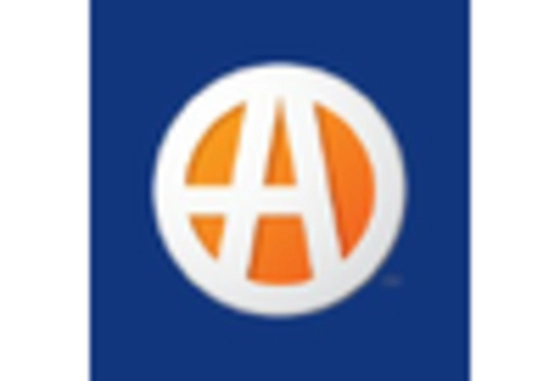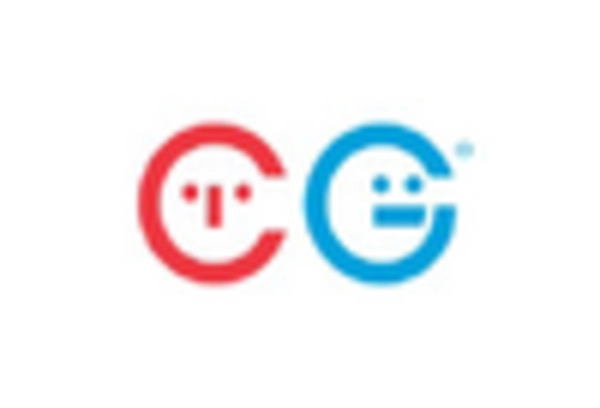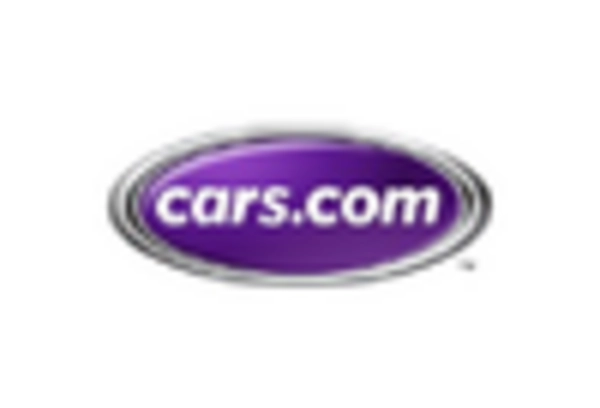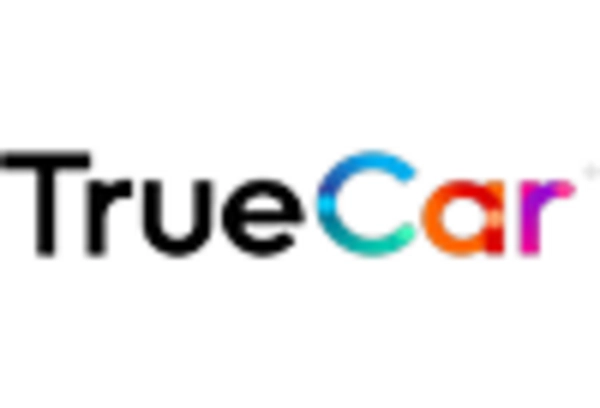Expansion of Digital Payment Solutions
The Automotive E-Commerce Market is significantly influenced by the rapid expansion of digital payment solutions. As consumers increasingly opt for online vehicle purchases, the availability of secure and efficient payment methods becomes crucial. Recent statistics indicate that digital payment transactions in the automotive sector have surged by over 40 percent in the past year. This growth is attributed to the rising trust in online transactions and the convenience of mobile payment options. Consequently, automotive retailers are integrating advanced payment technologies to facilitate seamless transactions, thereby enhancing customer satisfaction. The proliferation of digital payment solutions is expected to further propel the Automotive E-Commerce Market, as it simplifies the purchasing process for consumers.
Growing Demand for Used Vehicles Online
The Automotive E-Commerce Market is experiencing a surge in the demand for used vehicles, particularly through online platforms. This trend is largely driven by consumers seeking cost-effective alternatives to new cars, with many preferring the convenience of purchasing used vehicles online. Recent data suggests that the online used car market has grown by approximately 30 percent in the last year, indicating a shift in consumer preferences. This growth presents a significant opportunity for e-commerce platforms to cater to this segment by offering comprehensive listings, detailed vehicle histories, and competitive pricing. As the demand for used vehicles continues to rise, the Automotive E-Commerce Market is likely to adapt and evolve to meet these changing consumer needs.
Rise of Subscription-Based Vehicle Services
The Automotive E-Commerce Market is witnessing a rise in subscription-based vehicle services, which offer consumers flexible alternatives to traditional car ownership. This model allows customers to access vehicles on a subscription basis, providing them with the freedom to switch cars based on their needs. Recent market analysis shows that subscription services have grown by over 25 percent in the past year, appealing particularly to younger consumers who prioritize flexibility and convenience. As this trend continues to gain traction, automotive e-commerce platforms are likely to incorporate subscription models into their offerings, thereby reshaping the landscape of vehicle ownership and enhancing the overall customer experience.
Increased Consumer Preference for Online Shopping
The Automotive E-Commerce Market is witnessing a notable shift in consumer behavior, with an increasing number of customers preferring online platforms for vehicle purchases. This trend is driven by the convenience and accessibility that e-commerce offers, allowing consumers to browse a wide range of vehicles from the comfort of their homes. According to recent data, approximately 70 percent of car buyers conduct their research online before making a purchase. This shift not only enhances the buying experience but also encourages dealerships to adopt e-commerce strategies to remain competitive. As a result, the Automotive E-Commerce Market is likely to expand, with more businesses investing in digital platforms to cater to this growing demand.
Integration of Artificial Intelligence in Customer Service
The Automotive E-Commerce Market is increasingly leveraging artificial intelligence (AI) to enhance customer service and engagement. AI technologies, such as chatbots and virtual assistants, are being utilized to provide real-time support and personalized recommendations to potential buyers. This integration not only improves the customer experience but also streamlines the purchasing process. Recent studies indicate that businesses employing AI in their customer service operations have seen a 20 percent increase in customer satisfaction ratings. As AI continues to evolve, its role in the Automotive E-Commerce Market is expected to expand, offering innovative solutions that cater to the needs of tech-savvy consumers.

















Leave a Comment